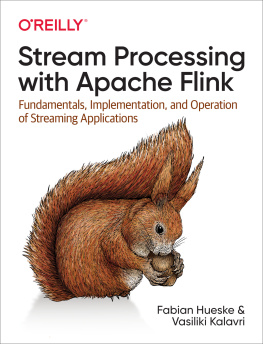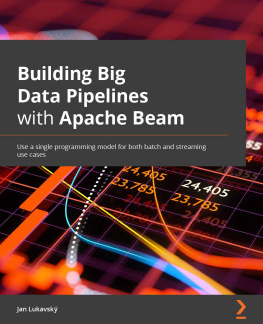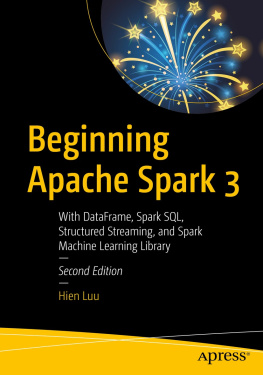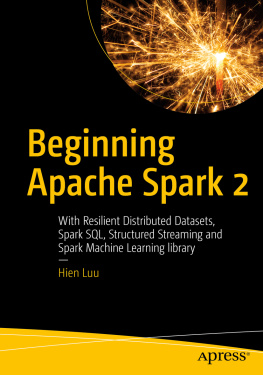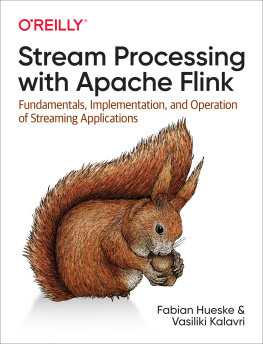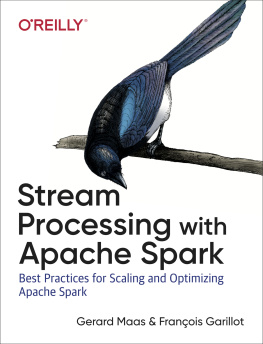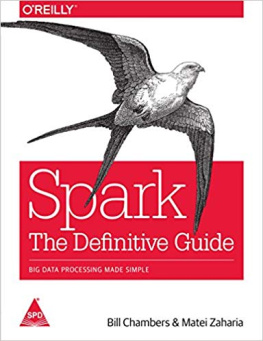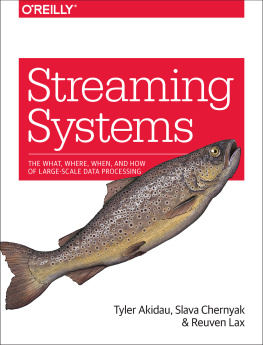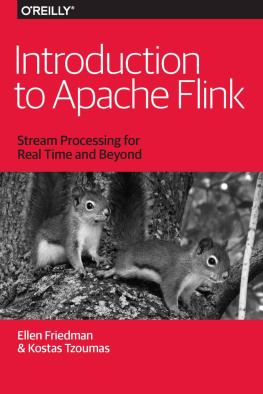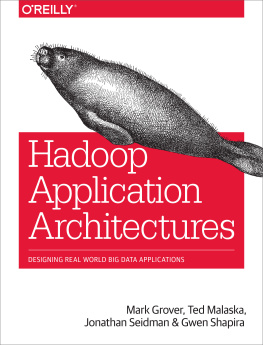Stream Processing with Apache Flink
by Fabian Hueske and Vasiliki Kalavri
Copyright 2019 Fabian Hueske, Vasiliki Kalavri. All rights reserved.
Printed in the United States of America.
Published by OReilly Media, Inc. , 1005 Gravenstein Highway North, Sebastopol, CA 95472.
OReilly books may be purchased for educational, business, or sales promotional use. Online editions are also available for most titles (http://oreilly.com). For more information, contact our corporate/institutional sales department: 800-998-9938 or corporate@oreilly.com .
- Acquisitions Editor: Rachel Roumeliotis
- Development Editor: Alicia Young
- Production Editor: Katherine Tozer
- Copyeditor: Christina Edwards
- Proofreader: Charles Roumeliotis
- Indexer: Judith McConville
- Interior Designer: David Futato
- Cover Designer: Karen Montgomery
- Illustrator: Rebecca Demarest
- April 2019: First Edition
Revision History for the First Edition
- 2019-04-03: First Release
See http://oreilly.com/catalog/errata.csp?isbn=9781491974292 for release details.
The OReilly logo is a registered trademark of OReilly Media, Inc. Stream Processing with Apache Flink, the cover image, and related trade dress are trademarks of OReilly Media, Inc.
The views expressed in this work are those of the authors, and do not represent the publishers views. While the publisher and the authors have used good faith efforts to ensure that the information and instructions contained in this work are accurate, the publisher and the authors disclaim all responsibility for errors or omissions, including without limitation responsibility for damages resulting from the use of or reliance on this work. Use of the information and instructions contained in this work is at your own risk. If any code samples or other technology this work contains or describes is subject to open source licenses or the intellectual property rights of others, it is your responsibility to ensure that your use thereof complies with such licenses and/or rights.
978-1-491-97429-2
[LSI]
Preface
What You Will Learn in This Book
This book will teach you everything you need to know about stream processing with Apache Flink. It consists of 11 chapters that hopefully tell a coherent story. While some chapters are descriptive and aim to introduce high-level design concepts, others are more hands-on and contain many code examples.
While we intended for the book to be read in chapter order when we were writing it, readers familiar with a chapters content might want to skip it. Others more interested in writing Flink code right away might want to read the practical chapters first. In the following, we briefly describe the contents of each chapter, so you can directly jump to those chapters that interest you most.
gives an overview of stateful stream processing, data processing application architectures, application designs, and the benefits of stream processing over traditional approaches. It also gives you a brief look at what it is like to run your first streaming application on a local Flink instance.
discusses the fundamental concepts and challenges of stream processing, independent of Flink.
describes Flinks system architecture and internals. It discusses distributed architecture, time and state handling in streaming applications, and Flinks fault-tolerance mechanisms.
explains how to set up an environment to develop and debug Flink applications.
introduces you to the basics of the Flinks DataStream API. You will learn how to implement a DataStream application and which stream transformations, functions, and data types are supported.
discusses the time-based operators of the DataStream API. This includes window operators and time-based joins as well as process functions that provide the most flexibility when dealing with time in streaming applications.
explains how to implement stateful functions and discusses everything around this topic, such as the performance, robustness, and evolution of stateful functions. It also shows how to use Flinks queryable state.
presents Flinks most commonly used source and sink connectors. It discusses Flinks approach to end-to-end application consistency and how to implement custom connectors to ingest data from and emit data to external systems .
discusses how to set up and configure Flink clusters in various environments .
covers operation, monitoring, and maintenance of streaming applications that run 24/7.
Finally, contains resources you can use to ask questions, attend Flink-related events, and learn how Flink is currently being used.
Conventions Used in This Book
The following typographical conventions are used in this book:
ItalicIndicates new terms, URLs, email addresses, filenames, and file extensions.
Constant widthUsed for program listings, as well as within paragraphs to refer to program elements such as variable or function names, databases, data types, environment variables, statements, and keywords. Also used for module and package names, and to show commands or other text that should be typed literally by the user and the output of commands.
Constant width italicShows text that should be replaced with user-supplied values or by values determined by context.
Tip
This element signifies a tip or suggestion.
Note
This element signifies a general note.
Warning
This element signifies a warning or caution.
Using Code Examples
Supplemental material (code examples in Java and Scala) is available for download at https://github.com/streaming-with-flink.
This book is here to help you get your job done. In general, if example code is offered with this book, you may use it in your programs and documentation. You do not need to contact us for permission unless youre reproducing a significant portion of the code. For example, writing a program that uses several chunks of code from this book does not require permission. Selling or distributing a CD-ROM of examples from OReilly books does require permission. Answering a question by citing this book and quoting example code does not require permission. Incorporating a significant amount of example code from this book into your products documentation does require permission.
We appreciate, but do not require, attribution. An attribution usually includes the title, author, publisher, and ISBN. For example: Stream Processing with Apache Flink by Fabian Hueske and Vasiliki Kalavri (OReilly). Copyright 2019 Fabian Hueske and Vasiliki Kalavri, 978-1-491-97429-2.
If you feel your use of code examples falls outside fair use or the permission given above, feel free to contact us at .
OReilly Online Learning
Note
For almost 40 years, OReilly has provided technology and business training, knowledge, and insight to help companies succeed.
Our unique network of experts and innovators share their knowledge and expertise through books, articles, conferences, and our online learning platform. OReillys online learning platform gives you on-demand access to live training courses, in-depth learning paths, interactive coding environments, and a vast collection of text and video from OReilly and 200+ other publishers. For more information, please visit http://oreilly.com.

